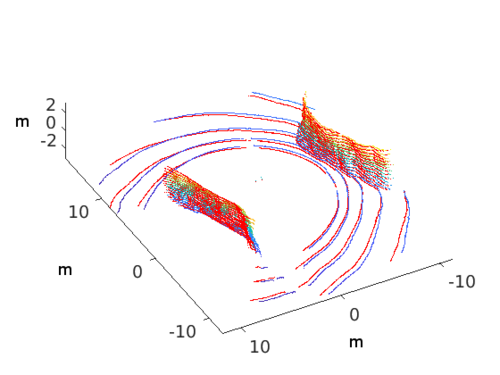
On-Manifold GMM Registration
This research develops a robust Gaussian Mixture Model (GMM) registration technique to enable mapping and navigation in dark, complex, unstructured domains such as caves and mines. Subterranean environments are often unmapped and challenged by low-lighting conditions and communication constraints. Prior works that leverage direct and image-based techniques with active illumination fail when taking tight turns due to sensor washout, dense methods are sensitive to initialization, and state-of-the-art registration methods that leverage probabilistic models are neither real-time viable nor thoroughly evaluated with real-world data. The proposed approach minimizes the squared L2 norm between two distributions through an on- manifold parameterization of the objective function. The contribution of this paper is a robust, real-time viable distribution-to- distribution registration methodology that considers all possible correspondences between mixture components. The approach is evaluated in a feature-scarce mine, unstructured cave, and on open-source data of an office environment with both LIDAR and depth sensors. The results demonstrate superior performance as compared to the state of the art. Beyond cave and mine environments, the method readily extends to solving the problem of registration in cluttered domains.

